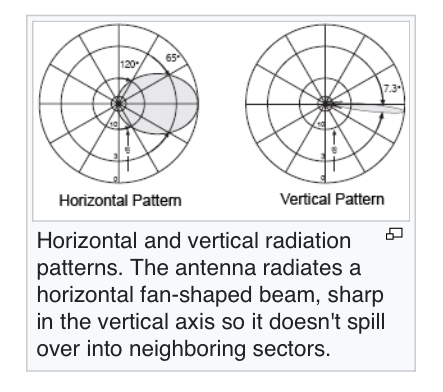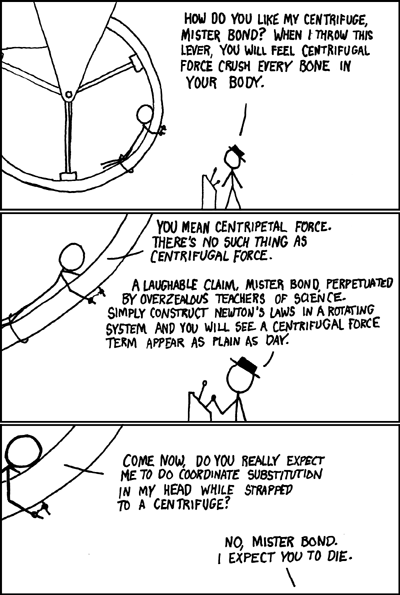And there is nothing one can do to hide, other than turning off the phone or reducing the odds by ensuring it is only used where there is only one receiver/transmitter…one tower the location would be on the circumference of a circle around a tower rather than a point location. Two towers gives two possible triangulations. More than 2 is an instant jackpot.
If you have left GPS (or another location service) on you remain easy to find. I’m guessing that someone who had not thought about her mobile phone’s cell tower connections will not have thought about GPS; or about whether she has passed any WiFi hotspots lately; or whether her phone is pinging Bluetooth IDs as she roams.
Of course, one wonders why the police needed Ms Maxwell’s cell phone records to obtain a warrant to search her home. At least the police didn’t use the StingRay to simply provide parallel construction of evidence but actually sought a warrant - that makes a nice change.
I’m not sure that is the only outcome. Mobile phone towers use antenna panels. Minimum of 3 usually at 120 degrees spacing. Each panel is an antenna array. Beam forming is commonly promoted as an aid to improved mobile performance. We may be surprised by what is possible?
Triangulation is time from transmitter to receiver. Having three at one location would still act as one as time would be virtually the same.
Triangulation is not the only solution.
Just as radar combines the mechanical/physical position of the antenna to locate a target. Complex electronics achieve a similar result using a fixed antennae array. With a typical minimum of three directional antenna panels on a tower the general direction is evident from which of the three antenna is connecting.
Phased arrays are just one form of RDF
Whether our mobile towers can provide that extra data I don’t know.
.
Warning. Pedant alert. Triangulation only involves angles to find a position. The use of distances as measured by mobile phone or GPS timing signals to find a point is called trilateration.
Triangulation for mobile phone location is based in distance from a mobile tower using time for pings to travel between the phone and tower…
Triangulation in land survey involves angles to determine position.
It has been accepted that either triangulation or trilateration is interchangeable terms for determining mobile phone locations…
This won’t work as the panels don’t measure direction like radar does. Radar sends out waves of energy and measures the distance to wave reflection and it’s angle. While distance to reflection is compatible to mobile triangulation, no angle is measured. If the panels rotated (or there were 100s around the tower to measure signal strength) and had narrow receiving fields, then it may technically be possible.
But Radio Direction Finding using a single antenna array does. Phase differential of signals received from the source. Hence the more detailed link.
Also the purpose of opening up the discussion. Explaining how using three separate or just two mobile towers to determine the approximate location of a mobile phone is just one solution. It does not exclude others.
A simple loop antenna is directionally sensitive. The antenna panels on a mobile phone tower are directionally sensitive. Beam forming techniques use an algorithm to optimise performance of mobile device communications, be estimating the direction of the mobile device. Panels cover nominally 60, 90, 129 degree options. Wikipedia holds a simple illustration.
As a crude technique knowing which antenna is communicating or detecting a mobile device narrows the possible location. Beam forming appears to improve on this.
Triangulation, by distance or direction determination is not in question.
I am asking whether the technology that supports Beam Forming is able to or be used with a single mobile tower to directionally identify the probable location of a mobile device. It may or may not be enabled or of such poor accuracy to offer no advantage.
An assumption is someone who understands more of how mobile phone tower transmissions function can expand.
Oh no they’re not!
Oh yes they are.
Nope. No. It’s another degradation of the English language; the two words have totally different meanings. It’s like saying that cleave means the opposite of cleave. Oh, wait.
Can I throw a stick on bonfire? From the OED:
trilateration
(traɪlætəˈreɪʃən)
[f. tri- + L. later-, latus side + -ation.]
A method of surveying analogous to triangulation in which each triangle is determined by the measurement of all three sides.
1948 Bull. Géodésique No. 10. 342 A network of triangles may be computed and adjusted from observed lengths of sides. The development of error in trilateration is different from that in triangulation‥as the side error is not accumulative. 1952 G. Bomford Geodesy i. 34 It might be possible to use radar trilateration between ground points instead of ordinary geodetic triangulation. 1960 Times 4 Mar. 3/2 Experienced in first order triangulation, trilateration and astro-fixes. 1974 Physics Bull. Apr. 136/3 A geodetic network was established to an accuracy of 2 mm over the surface of the Laboratory II site using triangulation and trilateration.
Love a good bonfire. The differences in the terms and mathematics are significant enough to pay attention to using the right one. Similar are the significant difference between, say, speed and velocity. Or weight and mass. Or the more technical centrifugal vs centripetal forces.
The main purposes of using multiple antennas on cell network towers with directional properties, as I understand it, is to enable lower power requirements since the radio waves are concentrated into a smaller area each. Also adds capacity.
But I suppose if a phone was communicating with a specific antenna, that had a beam of say 60 degrees, then that could be used find a rough direction and the time delay could provide the distance. But it wouldn’t be as accurate as ping signal cross matching over multiple towers.
Which would be a good start for some needs where there is only one tower able to connect.
The type of phased array microwave antenna used for each sector on a mobile phone tower is purposefully chosen. The signal is highly directional and concentrated. There is some overlap at the boundaries of each sector. If a mobile is detected by more than one antenna apparently the hardware determines which one to use for best signal. One more set of data points that would help to narrow the direction.
Hence even just a single mobile tower appears to provide useful information about where a phone is not, and narrows down where it could be.
They pattern of coverage typically (Wikipedia per prior link)

The vertical pattern is a very narrow beam.
Very different to a typical 1/4 wave monopole antenna as in the old days. The brains trust that introduced me to electronics and RF was quite well versed in such matters. The ability to talk wirelessly for free and move data although very slowly using FSK over the same carrier. Privacy - nil. Although there was the cost of access to the technology as well as some tech knowledge required.
If the authorities really want to track a mobile, then they’d need to install spyware on it. In the old days, the trick was to remove the battery. These days, non-removable batteries are increasingly common.
There is no reason to assume that such spy tools might not be factory installed. Huawei obviously has been accused of being a puppet of the communist lackey state; is there any reason for anyone to believe that other large phone vendors are not puppets to their respective capitalist pig states?
A Faraday cage and/or the freezer (with adequate protection) would be safer than simply turning your phone off if you are worried about a nation state possibly spying on you.
The release of 000 callers details in Tasmania shows that privacy and security that should be ironclad is actually rusted and full of holes metal.
How does a Govt fix the mess?
This article?
That’s the one.
This is concerning and there isn’t much information on the breach…except…
published online by a third party
Is the third party the company managing the data…or hacked data mirrored elsewhere. It appears that the data on the third party website is live as …
still updating each time paramedics are dispatched.
One would expect the IT boffins to plug the leak using a firewall of some sort as a temporary measure or to prevent external access to the data source and locking down access.
I wonder if the data is being read in transit (between the database and potentially mobile devices emergency services use) rather than access to the data base. If this was the case, why isn’t the data encrypted in transit?
